Painting a Clearer Picture: How Technology Innovations Are Improving Distracted Driving Data and Advancing Safety

Painting a Clearer Picture: How Technology Innovations Are Improving Distracted Driving Data and Advancing Safety
April 8, 2024
Monday 11:00 a.m.-12:30 p.m. ET
This Wednesdays with Woodward program is proudly presented as part of the Travelers Institute’s Every Second Matters® initiative, which empowers drivers, passengers, cyclists and pedestrians to speak up, set positive examples and play an active role in changing roadway behaviors to help prevent injuries and save lives.
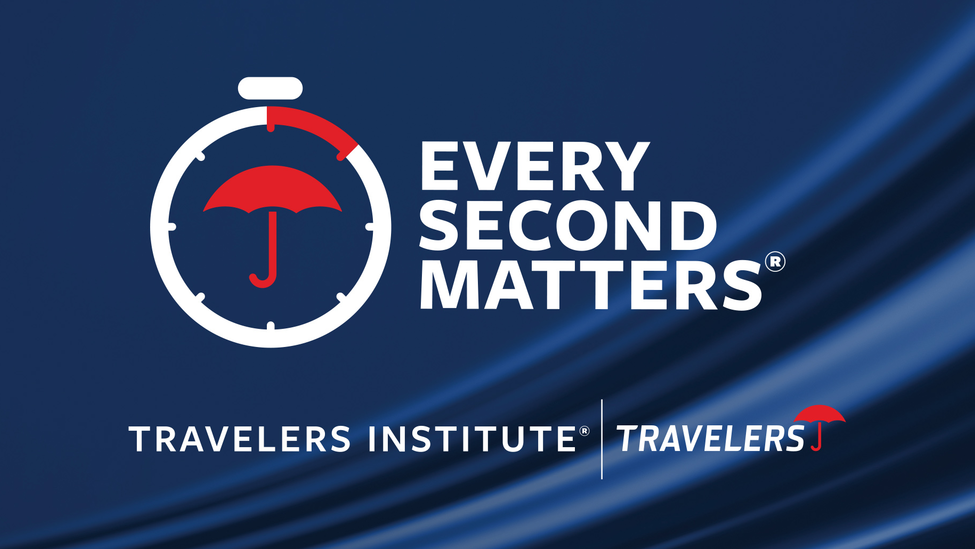
Special episode: Livestreamed from the Lifesavers conference
Distracted driving has historically been an underreported traffic safety issue on our roadways. However, advancements in technology, data modeling and AI provide innovative solutions, such as telematics programs, to help better identify and curb risky driving behaviors. This session, hosted in person at the 2024 Lifesavers Conference on Roadway Safety and livestreamed as a special episode of the Travelers Institute’s Wednesdays with Woodward webinar series, explored how technology helps assess crash rates caused by distraction, improve data collection and promote safer driving habits.
About Lifesavers
The Lifesavers Conference is a gathering of leaders and advocates in traffic safety. The conference took place April 7-9 in Denver. Learn more.
Watch webinar replay
(SPEECH)
[MUSIC PLAYING]
(DESCRIPTION)
Text, Wednesdays with Woodward (registered trademark) Webinar Series. A video call tile that reads, Lifesavers, from an event stage appears next to the image of a laptop that says, Wednesdays with Woodward (registered trademark) Webinar Series. A red mug next to the laptop has the Travelers umbrella logo in white. A poster graphic to the left depicts a sun setting behind the Rocky Mountains. It reads, April 7 through 9, Denver, CO - 2024. Lifesavers. Livesavers Conference on Roadway Safety. Text, Travelers Institute (registered trademark), Travelers.
(SPEECH)
TAMRA JOHNSON: Good morning, everyone. It is great to see everyone in the room. A very special welcome to those that are joining us online for the Wednesdays with Woodward webinar broadcast. I am Tamra Johnson, Vice President of Public Affairs for the American Property Casualty Insurance Association, the primary national trade association for home, auto and business insurers.
For decades, insurers have utilized and promoted technology to help consumers improve their safe driving habits and save money on their auto insurance. That is why we are very proud to partner with the Lifesavers Conference and with the Travelers Institute to host this morning's discussion, Painting a Clearer Picture: How Technology Innovations Are Improving Distracted Driving Data and Advancing Safety.
So a few housekeeping items before we get started. For those viewers online, we ask that you please drop your questions into the Q&A feature in your webinar window. For those here in the room, we are going to be utilizing Slido for today's Q&A feature. So we ask that you please visit slido.com and enter the code and password here on the screen and enter your question. We will ask questions at the end of the discussion.
A very special note that we are excited to be offering a variety of sessions live from the Lifesavers Conference today. We encourage any individuals that are interested in continuing on with us even after our session today to visit lifesaversconference.org/denver24.
(SPEECH)
So it is now my honor to introduce our host for today's session, Ginny Brzezinski. Ginny serves as Assistant Vice President at the Travelers Institute, the public policy division and educational arm of Travelers Insurance. Ginny, I will turn it over to you to introduce our panelists for today.
(DESCRIPTION)
Tamra, with dark hair and a dark outfit, leaves the podium on the event stage as Ginny, with blonde hair and a dark green shirt, takes her place.
(SPEECH)
GINNY BRZEZINSKI: Good morning. Tamra, thank you for that introduction, and thank you to Lifesavers for hosting this session. As Tamra mentioned, I'm Ginny Brzezinski. I'm the Assistant Vice President at the Travelers Institute. We are the public policy division and educational arm of Travelers Insurance. And I'm thrilled to be with you here today in Denver.
Today we are livestreaming from Day 2 of the Lifesavers Conference, where roadway safety professionals from across the country have gathered to exchange ideas and strategies to reduce preventable increase in deaths on our roads. And in addition to those of us in the room here today, I'm thrilled to welcome thousands of attendees to this session, which is being broadcast as part of the Travelers Institute webinar series Wednesdays with Woodward.
We're welcoming insurance agents and brokers, business leaders, students and more online. Thank you, all, for being with us.
(DESCRIPTION)
Text, Wednesdays with Woodward (registered trademark) Webinar Series. Painting a Clearer Picture: How Technology Innovations Are Improving Distracted Driving Data and Advancing Safety. Logos appear for the Travelers Institute (registered trademark), Travelers, MetroHartford Alliance, Connecticut Business & Industry Association (CBIA), Professional Insurance Agents, Insurance Association of Connecticut, the Lifesavers Conference on Roadway Safety, Center for Risk and Uncertainty Management at the University of South Carolina’s Darla Moore School of Business, the American Property Casualty Insurance Association (service mark), and the Master’s in Financial Technology (FinTech) Program at the University of Connecticut School of Business.
(SPEECH)
Right off the top, I want to thank our co-hosting organizations, the Lifesavers Conference on Roadway Safety, the Connecticut Business and Industry Association, the Center for Risk and Uncertainty Management at the University of South Carolina's Darla Moore School of Business, the Insurance Association of Connecticut, the American Property Casualty Insurance Association, the Master’s in Financial Technology Program at the University of Connecticut School of Business, the MetroHartford Alliance and the National Association of Professional Insurance Agents. And I'd like to share our disclaimer, which you can see on the screen here and those viewing the webinar can see on their screens.
(DESCRIPTION)
Text, About Travelers Institute (registered trademark) Webinars. The Wednesdays with Woodward (registered trademark) educational webinar series is presented by the Travelers Institute, the public policy division of Travelers. This program is offered for informational and educational purposes only. You should consult with your financial, legal, insurance or other advisors about any practices suggested by this program. Please note that this session is being recorded and may be used as Travelers deems appropriate. Travelers Institute (registered trademark). Travelers.
(SPEECH)
OK, let's get to it. As most of you know, April is Distracted Driving Awareness Month. This is an opportunity for us to shine a light on this important safety issue. And today we're going to do just that.
(DESCRIPTION)
Five speakers smile in headshot photos on the slide, above their names and titles. Text, Speakers. Tamra Johnson, Vice President, Public Affairs American Property Casualty Insurance Association. Ginny Brzezinski, Assistant Vice President, Public Policy Initiatives, Travelers Institute, Travelers. Johnathon Ehsani, PhD, MPH, Associate Professor, Johns Hopkins, Bloomberg School of Public Health. Kit Delgado, MD, MS, Associate Professor of Emergency Medicine, Perelman School of Medicine; Attending Physician, Penn Presbyterian Medical Center. Ryan McMahon, Senior Vice President of Strategy and Corporate Development, Cambridge Mobile Telematics.
(SPEECH)
We're going to lean on technology, data, telematics and other developments that are taking shape to help us better understand and combat distracted driving behind the wheel. And I'd like to point out to our virtual audience joining us on Zoom, please put any of your questions in the Q&A, which you'll see at the bottom of your screen, and we'll get to as many as we can.
So we're bringing together an all-star panel to help us think through some promising developments in the fight against distraction. I am thrilled to welcome three outstanding experts who bring insights from all corners. Together, their insights will give us a fuller picture of how we can make our roads safer.
Dr. Johnathon Ehsani is Associate Professor at the Johns Hopkins Bloomberg School of Public Health. He uses policy and behavioral research to prevent vehicle crashes and advance health, safety and equity in transportation. Dr. Kit Delgado is an attending physician at the Penn Presbyterian Medical Center in the emergency room. So he sees the trauma from roadway collisions firsthand. Outside the ER, Dr. Delgado serves as Associate Professor of Emergency Medicine at Penn's Perelman School of Medicine.
And Ryan McMahon is Senior Vice President of Strategy and Corporate Development at Cambridge Mobile Telematics, the world's largest telematics provider. Now, if each of you-- we'll go down the line here-- could tell us a little bit about your work and background. We'll start with you, Dr. Ehsani.
(DESCRIPTION)
Ginny gestures to Jonathan, Kit, and Ryan, sitting in chairs to the right of the podium. Jonathon has dark hair with a very short beard and wears a suit and tie. Kit has dark hair with no beard and wears a suit with a name badge and no tie. Ryan has short dark hair and a short dark beard, with a black Cambridge Telematics button-down shirt.
(SPEECH)
JOHNATHON EHSANI: Thank you and good morning. It's my pleasure to be here. And just a little bit of context for why I feel like this session is really an exciting one. My work has focused for the last almost 20 years on teen drivers.
One of the primary systems that we have is the licensing system, the way that young people kind of progress through licensure. They get a learner permit. They take a behind-the-wheel test, and they get an intermediate license. And then after a certain point, they're free to drive on their own. And so that's going to be the focus of my remarks and the area of research that I'll be touching on today. Thanks.
(DESCRIPTION)
Jonathon gestures to Kit, sitting next to him.
(SPEECH)
KIT DELGADO: It's great to be back here at Lifesavers. I've been practicing emergency medicine in a Level 1 Trauma Center for over 14 years, for the last seven years at Penn Presbyterian. And we see a ton of people every day injured in car crashes. And what's frustrating for me, working in the emergency department, is these are 100% or almost 100% preventable-- alcohol-impaired driving, distracted driving, speeding, not wearing a seat belt.
And so I turned that frustration of trying to take care of these folks into figuring out how can we prevent this, in the first place? And I think when you talk to folks in ER, particularly the drivers, they know what they did was not the right thing to do, and yet they still did it. And so that's why for the last seven or eight years, I've devoted myself to studying why people keep on doing things that they know they shouldn't be doing.
And that really turned me on to behavioral economics, which is applying insights from psychology to understand why we deviate from rational behavior. And so taking those insights and combining them with smartphone telematics is what my research team has been doing in this space for five or six years now, where we're using things to make it easier, provide feedback, social comparisons and incentives, and things that actually can be plugged into insurance programs to actually change this behavior at scale. And that's what I'll be talking about during this presentation.
(DESCRIPTION)
Ryan lifts his mic, sitting to the right of Kit.
(SPEECH)
RYAN MCMAHON: It's a real honor to be joining this group of truly illustrious individuals. And I represent Cambridge Mobile Telematics. I've been at the company for over five years. The company's mission is to make the world's roads and drivers safer. And we do that by making technology that measures risk. And then our partners work with that technology to then build strategies and incentives to reduce those behaviors.
And it's amazing to see the growth of this technology over a number of years. When I was in college, I was an EMT. And the first call I ever went to was a fatal car crash. And it sticks with me to this day. I worked in the insurance industry for a long time and talked to a lot of people that were in car crashes. And you see these things progress to really affect people's entire lives.
Not even if they get into an injury crash. Just a car crash, in general, is economically a disaster for so many individuals. And to see the fact that we can bring technology to help reduce behaviors-- and then there are people that exist in this world that want to provide incentives to individuals to reduce that. Right now in the insurance ecosystem, about $4 billion is provided from the insurance industry to consumers that are engaged in telematics programs, and we're still just scratching the surface. That number is going to be a lot bigger in the next five years.
So really honored to be joining this panel to talk about the technology, talk about the strategies that are being used. And we work with about 140 programs around the globe, in Australia, Japan and Germany, UK, South Africa, the U.S. and beyond. And really, it's a transformation of where technology used to be 10, 15 years ago and where we sit today and what we, frankly, actually understand what causes-- what causes crashes today is so much more bright than it was even five years ago, and happy to share that with this group.
GINNY BRZEZINSKI: Well, thank you, all, for that level set. I'm excited for this discussion. Johnathon, I want to start with you. We're focusing on data and technology. But let's look back a little bit, and I want you to bring us up to speed on the data we've traditionally had around distracted driving. Where does it come from, and what limitations have we had to contend with?
JOHNATHON EHSANI: Historically, actually, and for-- truly for decades, we've relied on two sources of data to understand really all etiology of crashes, including distracted driving. The first is crash reports. Crash reports are useful because they give you a slice of a moment in time of what's going on in a population. They're typically aggregated annually.
When you drill down to an individual crash report, it has the information that the police officer could piece together after the crash had occurred. So it's, What is observable? What is reasonable to deduce?
And then we've also had roadside observation. So people would stand-- I did this. One of my first projects was literally standing on the side of the road counting how many people wearing seat belts. It's really flawed, if it's nighttime, if there's glare, all kinds of stuff. But that was the best that we had.
One of the first projects that I did was to look at the effectiveness of a new distracted driving law in Michigan. And that was passed for teens. So the teens were not allowed to use a handheld device. And we're trying to understand the effectiveness of this law on teens, using overall crash data.
Well, you can imagine that when you look at the totality of crashes, some proportion of them are due to distracted driving, but not all of them. And so you're trying to deduce from this enormity of this phenomena the effectiveness of a law on a subset of crashes. And we found very weak, if any, effects.
And so I think one of the challenges that we've had is that we've had to rely on these two data sources that were imperfect. Now, we achieved a lot with those data sources that we had. But now new tools are available. And that's the focus of this discussion.
GINNY BRZEZINSKI: That's right. Kit, can you add to that? You see the result of distracted driving in the ER on a regular basis. What trends are you seeing right now in the ER?
KIT DELGADO: Sure. So I would say there's been a big shift from pre-pandemic to post-pandemic that's been really noticeable for me clinically, without even looking at the numbers. We saw car crashes. I did look at the numbers. In 2015, there was something like 32,000 fatal crashes.
And then COVID hit. People were not going out as much. And we started getting people coming in from street races on open roads, really high-speed crashes, more alcohol-impaired driving. And I think in the context of that, distraction just makes everything worse. If you're speeding or impaired, it just increases the risk.
And the one trend I've seen more than others, it seems to be these rear-end collisions. I think we know that they probably accounted for about a quarter of crashes before. And I think now it's probably about a third in terms of the statistics. And it's just every single day.
It's like, I was sitting at a stoplight and then boom, someone hit me from behind. It's like, what causes that? And so in a police report, the chance that they're going to be able to catch someone being distracted and file that in a report means-- it is really low. But we know from naturalistic data and other data that distraction accounts for probably 80% to 90% of those rear-end collisions.
I see it all the time. The person comes in, terrible neck pain, back pain, sometimes spinal cord injury, things like that. And so it's just-- it's routine. And hugely—
GINNY BRZEZINSKI: [INAUDIBLE]
KIT DELGADO: Yeah. And hugely underreported. It happened to me, actually, on the way back from a shift. I treated people, and I was coming home. And then boom, someone slammed into the back of me, and he's fumbling out of the car with his phone. And so it's very common, very underreported, but I think now we're getting a better look at this with smartphone data.
GINNY BRZEZINSKI: So when you are in the emergency room, and you're dealing with a patient who's been in a collision or a driver who's maybe caused a collision, what do those conversations look like?
KIT DELGADO: It varies. I think for patients that are-- obviously, there's very severely injured patients, who are in the trauma bay, and the focus is resuscitation. And I don't have a chance to talk to them. But for the patients with more minor injuries, like these poor people who are hit-- their car's totaled by a distracted driver, they are in a lot of pain. They're very frustrated.
And then for talking to the drivers, sometimes it's not appropriate to talk. Our primary focus is delivering medical care and taking care of them. But sometimes they do open up about it. And I do remember very distinctly a couple of cases.
But walking into a room, it was my first patient of the shift. It was a young guy. I think he was just in college. And he told me he was driving down the highway. He got a-- his phone pinged. He reached to get the phone. He leaned-- he dropped it and fumbled it, leaned to get it. And next thing you know, he slammed into the guardrail and hit his head very hard on the side of the door.
Luckily, he was able to get out of there and get transported and fortunately just had a concussion, but he'll probably have some lasting symptoms for some time. This was a smart guy. He said he was going to Wall Street job the next year. He was just answering the phone.
And it's very illustrative of the challenge that he knew that he shouldn't be doing that. But he couldn't resist reaching for the phone. It was someone-- his girlfriend. And this happens all the time. And so it speaks to the fact that when the phone is in the car, it's acting by default. And there's some solutions to deal with that.
GINNY BRZEZINSKI: OK, Ryan, let's talk about telematics. We're starting to get a flood of data surrounding driver behavior and distracted driving from telematics. So let's start at the ground floor here. What is telematics, and how does it work?
RYAN MCMAHON: Yeah, absolutely. So the base of the technology is, essentially, looking at sensor data from a mobile perspective. Telematics is used everywhere in telecommunications and spaceships and aerospace. But in the context of this conversation, we're looking at sensor data that is coming from, for the most part, from smartphones, the sensor data, things like accelerometer, gyroscope, magnetometer, barometer, GPS.
Those sensor data are then relayed to, then, drive events. And events are things like a speeding event, a hard-braking event, a distracted driving event. And those events are now put together with crash data and claims data. And then we get a very specific picture of what behaviors were present prior to an impact occurring.
And what's amazing now, where we've gone in the last 10 years or so, is now that data is actually getting to the point where you can create a reconstruction of a crash. So not only do you see the behaviors of an individual or a series of drivers over a long period of time, you actually now see crash data as well. And that crash data helps bringing information relative to things like, Was there an evasive maneuver prior to the crash?
And what we've seen in the last few years is there are more crashes with less evasive maneuvers, so similar to what Kit was just referring to, where you have individuals that are in a crash, and the physics that are in part of that crash, of a no-evasive maneuver crash, is a very, very high severity event. And that data, the telematics data, is helping us to get to that point.
And it's deployed mostly through the insurance industry to this point. So every single person that uses our technology is voluntary, every single person opted in. Over 37 million people have opted into this type of technology because the insurance industry has given incentives to drivers to have their insurance price rated on how they actually drive. And the reason that that's important is it gives the opportunity for the individual to be more than their actuarial subgroup or more than their motor vehicle safety record.
It allows them to actually establish their own individual record for safety. And what's amazing is when you do that, you create this loop of feedbacks and incentives, feedback and incentives. And that structure, we've learned, is the key structure. We presented at the Transportation Research Board this past January. That structure of providing feedback to drivers, layering in incentives on top of that, creates a reinforcing loop that ultimately reduces behaviors that lead to crashes.
And the funny thing is that despite the fact that this is an activity that we do all the time, it is well-documented, and we see it regularly, that the amount of overconfidence in driving behavior is off the charts. So individuals' belief of their own safe driving is well in excess of how their actual risk is exhibited. And the challenge that happens when it comes to driving is we do all these little activities, like reach for the phone, in that particular case. And we do that on a regular basis and nothing bad happens.
But in fact, it turns out to be one of the most risky activities that we do that we have the belief that there's no risk involved in it. So then that self-reinforcing loop becomes overdominant, and as a result of that, we have individuals that are putting themselves in very hazardous situations, but they don't even know it. Because their belief is nothing bad happened. But in reality, it's just a matter of seconds.
GINNY BRZEZINSKI: Let's see a show of hands here. How many in the room-- if I can see without the light-- have used telematics in some capacity?
(DESCRIPTION)
Members of the audience raise their hands.
(SPEECH)
Ryan, can you see that? It looks like maybe about a half-- or yeah, maybe a third. What do you think? Does that track with the general population, or is this a heavier usage?
RYAN MCMAHON: It's better than last year.
[LAUGHTER]
So I presented last year at Lifesavers. And I am always surprised, when I talk to road safety professionals, that there's not more people that raise their hands. Because the insurance industry is giving 10%, 15%, 20%, 30%, 40% discounts for safe drivers. And I'm imagining that this community is overrepresented with safe drivers or should be.
But generally speaking, about 10% of the population is probably opted in right now. And that number is growing. Really the big challenge-- and this is to any of the insurance agents that are listening in. Consumers actually really do like the programs. It's just they don't get offered it as much as they probably should. And the more that people are offered, the opt-in rate is actually in the 60%, 70% range.
It is a very favorable program to consumers because they actually see transparently how their behavior impacts what they pay. So it becomes a very powerful mechanism. But it's still not enough.
GINNY BRZEZINSKI: So how long has telematics been around? And about how many drivers right now are you learning from with this data?
RYAN MCMAHON: Now about 11 million drivers are active with our program right now, 37 million over the course of the company. The telematics industry got a start because of California, interestingly enough, because you can't use telematics for insurance pricing in California. That's another session.
But the California Air Resources Board mandated that the OBD2 port into a car provide a single stream of information that the insurance industry realized they could take that information and then make use of it. The challenge with that first iteration of the technology was it required the insurance companies to send out these devices that could read the OBD2. And then the consumer could figure out where in the car you could put it, place it in, record for some period of time, and then send it back.
And in fact, in that time, the insurance industry's belief, because they didn't see it, was that drivers didn't change their behavior. So you could look at a driver's behavior over a very limited period of time and say, you are safe, and you are unsafe. It turns out that's not the case. And we can talk about this in a lot of detail later.
But what happened is CMT got their start with research from MIT. And where CMT is based is on the campus of MIT, is realizing that there are mobile devices that have accelerometers, that have gyroscopes in them. And this is pre-smartphones. And the first iteration was putting those devices in the backs of cabs. And the first use case was pothole patrol, to determine where potholes were, road surface conditions.
And they found that out, you could figure that out. The insurance industry realized, oh, there's a corollary between the data that can come from these mobile devices and the data that can come from vehicles. We don't have to go through the process of sending out to consumers these devices to then poll and then sent back in. So about 10 years ago is when it started. And the first use cases were limited.
And now over time, every single insurance company in the top 10 offers a telematics-based insurance program. And the number of people that are active, as I mentioned before, is 11 million. And it's growing at about 30% every year.
GINNY BRZEZINSKI: Wow. Kit, what are the most important things that we know today about distraction, thanks to these larger data sets we're getting in?
KIT DELGADO: I think Johnathon mentioned this, as well, and Ryan teed this up really well. It's like getting a completely different window and a much more complete picture of what's going on, compared to crash reports, compared to roadside observation. And then the other type of technology is actually putting cameras in cars, which is very essential for getting great detail. But you could only do that in a very small number of people.
Here with these large data sets, so Ryan mentioned 11 million drivers. In our studies, we've enrolled anywhere between 1,000 to 2,000 drivers at a time and finding similar trends. So the average amount of time that someone is using their phone while driving in an hour of driving, we're finding, is about four to five minutes. And you think about it only takes a couple of seconds to cause a crash.
And that's handheld use. That's not passive phone use, hands-free phone use. But that four or five minutes, on average, is really different when you look at the distribution of drivers. So there's probably about a quarter of drivers who barely pick up their phone while driving with the screen on, to a quarter of drivers who are on there 20 or 30 minutes, phone constantly moving around.
And that quarter of drivers probably accounts for about 75% to 80% of the overall phone use. And so one way that this technology can be used is to get those high-risk drivers to really-- if you can move that 20% and bring that down, you can make a huge difference at the population level in terms of risk. And you can also target interventions there.
GINNY BRZEZINSKI: Johnathon, do you want to weigh in on this? What do you make of this new data stream?
JOHNATHON EHSANI: Yeah, I think the-- one way to think about this is that telematics is an innovation in measurement. So it's a little bit akin in the road safety world to the invention of going from eyeballing a petri dish to having a microscope. You can now see the active ingredients or the active agents causing disease, so to think about the revolution that occurred with the invention of the microscope and the theory of germ disease, and so on.
So I think it is really just the beginning. I think the availability of these data could have multiple applications. The obvious one we've discussed today is insurance and behavior change. But it could begin to be applied to all kinds of streams.
Like, for example, the first use case of pothole detection, well, that's a novel one. But what about all of the roadway modifications we're making around bicycle lanes, roundabouts, etc.? You can begin to understand, for example, the impact of infrastructure change.
You can also begin to understand larger secular trends. For example, during COVID, for example, what changed? And I think the final one, which was already mentioned, is identifying the highest-risk groups and developing precision interventions for those individuals.
KIT DELGADO: I'll just add to that great, excellent list is that because you can do this at the population level, and you can also geomap high-risk areas where a lot of speeding and distraction is occurring, times of day, things like that-- you see these reports that CMT puts out around spikes in distraction that occur around various holidays and/or events, and things like that. It's time trends, geospatial trends. You cannot just track distraction, but you can track speeding over the posted speed limit, where people are slamming on their brakes a lot. It's just an amazing tool that can be used at the population level for traffic safety.
GINNY BRZEZINSKI: Yeah, absolutely. Ryan, let's go through some frequently asked questions about telematics. What is one thing a smartphone can measure that might surprise us?
RYAN MCMAHON: Yeah, I think that distracted driving is probably one of the things where we start and we're talking a lot about today. The piece that I think is really interesting is what we talked about this year in our report. And I have a facsimile copy of it here. It's a 160 pages or so, but very detailed. It's the fifth iteration we put together of this report. It is available online at our website.
The speed of impact to me is one of those things that I think is really important. And we start to get an insight into what actually physically occurred in the car at that point. And what's happening now and as a former EMT-- and I think this is really important for Kit's work-- is we actually are detecting those crashes in real time and sending that information to 911 centers.
And when the dispatch occurs, that information can then go at the same point. And this is from a smartphone. So this means it follows you into an Uber. It follows you into a Lyft. It follows your kids into their ride home with someone else.
So now all of a sudden you have a road safety tool that's available, that extends far beyond the capabilities that we thought before. And it's not just the latest iPhone. It's any phone that it will work with. And we work in developing countries.
So now this technology doesn't require specific type of vehicle. It's available everywhere. So to me, it's the fact that we can detect crashes and send emergency help to people. That, to me, is the biggest transformation that's happened recently. And it is saving lives, we've heard from people. And it's one of those things that makes people stand up at work.
GINNY BRZEZINSKI: So can the technology differentiate between a passenger and a driver?
RYAN MCMAHON: It can, yeah. And that's one of the things. I was a customer of CMT's before I came to work here. I joined when there was 40 or so people. And I remember it was amazing. It felt like magic to me at those days.
But it really is the early days in the beginning of artificial intelligence and machine learning and the ability to look at a hierarchy of variables to determine driver versus passenger. And then the catchall behind that is after a trip, a notification is given to a driver, and they're given the ability to label that trip. And actually, I think that Kit did a presentation on this. I forget exactly what it was for, a posted presentation on the efficacy and the utility of it. And it's really high.
But it is really the foundation of artificial intelligence mobility. And it works exceptionally well. And there's folks that have seen it personally, and I have, too. My insurance is through this program.
GINNY BRZEZINSKI: And it can also differentiate, like if you're on public transportation versus--
RYAN MCMAHON: You can, yeah, actually. And it becomes really interesting when you start to look at macro patterns of mobility. Talking about COVID, huge reductions in ridership on public transportation right after COVID, which has ancillary issues, bicycle transportation as well. And there's no data that is coming from the device itself.
So one of the things that, on the opposite side, is what do people think that it measures that it doesn't? It measures nothing that occurs on the device itself. It's just looking at the sensors. So we're deriving information from sensors, accelerometer. We're looking at physics, basically, and the physics as observed with the-- a myriad of sensors that we're carrying around with us. And those continue to grow. But none of the content, nothing that you're doing on the phone, none of the information is coming through.
GINNY BRZEZINSKI: OK. Can you give us some examples of how the measures have improved or gotten more precise over time?
RYAN MCMAHON: Yeah, absolutely. So what's been amazing is it's followed-- the technologies continue to scale with the quality of the phones that are available. And you think about the cycle of technology. Phones continue to get more and more and more advanced. And the amount of computing power that's available to us on demand is exponentially higher than it was even two or three years ago.
And the cycle of development for phones is much higher than the cycle of development for cars. And we're taking data in from about 2,500 different, unique platforms, so lots of different variability out there. And now the types of distraction that we're measuring now is tapping versus swiping. We're looking at handheld. We're looking at phone call risk versus risk that's derived from mounting a phone.
So all these types of elements, we started to look at complex maneuvers, things like U-turns, looking at elements that-- familiarity with streets. We now have the ability to look at the difference between risk of different types of contexts of events. And this is just because we've scaled to the point, and technology has kept up with, the hardware and software have developed in tandem.
GINNY BRZEZINSKI: What is something that you'd really like to be able to measure, but you're not quite there yet?
RYAN MCMAHON: Yeah, we often get asked for two things. One is wrong-way drivers. And we've started to look at this. We can detect U-turns. So we start to look at U-turns that are on controlled surfaces and controlled highways. There's not enough data yet, so we're continuing to look through that. Because a lot the-- what we can look at is an individual that gets onto a controlled access highway and then turns around and goes back the other way.
So these are the type of things. And our map-matching algorithms are to the point where they're more and more sophisticated. So I think in due time, we'll be there.
And impairment, there was a very big conversation about impairment with different telematics tools. And I think that over time, we're going to get to that point. We have camera technology, and we can detect things like lane drift and those type of elements. And the more dual instrumented vehicles that we have, we'll be able to get there.
My hope is that the research community takes this up and uses this technology to find more things. Because while we are-- we're 500, 450 folks strong and amazing individuals with great backgrounds in physics and computing, computer science, data science, I think that there's a lot more that can be uncovered. And as Kit and Johnathon have both mentioned, I think that there's so many smart people that are just here at this event, that if they came back in a year's time to say, yeah, actually, we can figure out if someone is impaired from the physics of their driving, how much more can we do if we can distribute it through a cell phone?
Because the technology is so cheap. I mean, our technology works on a $29 phone at Walmart right now. So it doesn't require all the level of change to get to a fully instrumented vehicle. I mean, that's really the best thing. The fully instrumented vehicle is for sure the most concrete. But there are so many more drivers that are not buying cars on a yearly basis that what can we do with technology that's available with us now? And how do we make the most from it there?
GINNY BRZEZINSKI: So I guess the question-- I was turning all of this data into something usable. And, Kit, I'd like to talk to you a little bit about the Nudge Unit at Penn Medicine that you lead. It's a really interesting concept. Why don't you tell us more about that?
KIT DELGADO: Sure. Maybe I'll back up just slightly to the predecessor to the Nudge Unit. So I think Ryan gave an amazing introduction into some of the biases that contribute to distracted driving or the availability bias of being able to-- using your phone on a daily basis and hey, I didn't get into a crash, so what's the risk?
Or the finding we've replicated, and many others have replicated, if you survey 1,000 people, and you ask them to rate their driving, over 90% think they're better than average, though the Lake Wobegon effect or the Garrison Keillor, wherever, thinks they're above average. We take these insights. And I started a research group called the Behavioral Science and Analytics Injury Reduction group.
And after that, we've taken a broader approach to health. And that's where the Nudge Unit fits in our health system, where we're applying insights from behavioral science to changing health behaviors, improving health care, but also, still focused on injury prevention. And so there are a couple of things that we've done with smartphone telematics.
So our first iteration was seeing, as Ryan mentioned, the incentives with insurance. And you have 10% of the population on a usage-based program, are perfectly aligned for a win-win situation. Companies can maintain better loss ratios by predicting who's going to get into a crash. And the drivers can save money on insurance by opting into these programs. And so it's a win-win, and it's self-sustaining.
And so we said, OK, the standard program says, OK, you'll get a discount at the end of your six-month period, maybe a 10%, 20%, 30% that adds up to maybe $100, depending on how safe you drive. And what we know from behavioral economics is that people who frequently engage in their phones while driving pursue short-term rewards that are not as big as long-term rewards. So the first thing that we do is say, OK, instead of giving people, say, $50 at the end of six months or $100, why don't we measure their phone use while driving and say that every week, you're going to get paid $7 a week. But we're going to withhold those payments if you use your phone above a certain threshold.
And we compare that to saying, hey, do what you would do in a usage-based program, and you get a discount at the end. What we found was the same amount of money, twice the impact from just delivering rewards more frequently. So what this tells us is frequent rewards, frequent feedback, drives behavior change. And you don't have to change the overall discount amount, that $4 billion that is being paid out right now in terms of discounts. Just use it more-- use it more smartly.
Also contributing to that framing things in terms of a loss and also showing people how much money they're losing as time goes on from not changing their behavior. So combining behavioral insights with the incentives can stretch that money a lot farther and produce some bigger effects. And then I can talk about things that we've done to sustain those things over a long time.
GINNY BRZEZINSKI: So did they keep on-- I mean, did you find that if they would if they had a week where they used their phone too much, they didn't get the money, did they just give up? Or did they try harder next time? Or how was that behavior?
KIT DELGADO: Yeah. So one of the things with incentives is you always worry that when you're providing this extrinsic incentive, that as soon as you take it away, people revert back to their behavior. And so in our first attempt at this, we did see some evidence of that happening. So after we turned off the incentives, people tended to regress to-- I mean, not everyone, but most people.
And so what we did was that we looked at drivers who changed their behavior a lot and sustained it, using the data. And we called them up, and we interviewed them and said, how did you do this? And what they did was that they used what we call situational or environmental control strategies. So they got a phone mount. They turned on Do Not Disturb While Driving. They made a plan to not use their phone. They put their phone in the glove compartment, things like that.
So our second iteration really doubled down on the science that shows how to build sustaining habits. And so we actually got the insurance company to mail out phone mounts. Everyone got phone mounts. And then we did an exercise called WOOP, which is called creating a wish, the outcome that you want to see, the obstacle in your way, and a plan. And so we had everyone customly do that.
And then we randomized people to, basically, a weekly competition, where they got grouped with people, 10 other drivers that they didn't know from across the country, that use their phone just about as much as they did. And they got, basically, competed on a weekly basis to see who could reduce their phone the most, their phone use the most. And then in the last group, we did all those things, but then we said, if you won your competition, you got $5 per week. And then if you did-- completed your goals over the course of seven weeks, you would split a pot with whoever else did that.
And what we found was that even without offering another incentive, that weekly competition in that behavioral engagement got people to reduce their phone use by 30% and actually improve over time. Even when we stopped the program, it just stayed there at 30%. And with the incentives, it turbocharged that and reduced it by even more than that.
GINNY BRZEZINSKI: Wow.
KIT DELGADO: And so you can do it with incentives, but you don't need incentives to do it, as long as you're using the right strategies.
GINNY BRZEZINSKI: So, Ryan, how are these insights on these incentive programs and everything being factored into what you're doing?
RYAN MCMAHON: It's actually something that we created an entire group inside the company that's on behavior change. And there are people that their entire job at CMT is on this. Ultimately, we have so much variability in some of the markets we work in, including the United States is very regulated. So each insurer is required to adhere to very particular use cases of the technology.
But there's a lot more that extends out there from the insurance industry. For example, AARP has a program where it's designed to do exactly this, provide regular incentives to individuals. We have a program in South Africa that has been able to reduce the crash rate by 25%, which is amazing. I mean, the ability to do this is here. It's in front of us.
As, Kit, you're talking about this, I'm like, it's like Ozempic for distracted driving. So maybe that is what we need to be talking about. But what's happening in the insurance industry is they're paying attention. There's a lot of effort. There's a lot of effort and activity that's happening right now to take this in.
There's a number of carriers that are using these strategies now and actually putting it into the way that they approach the use cases. And some of these are also just getting alerts to people. So we have a program right now that's providing real-time alerts to drivers that says, oh, you're engaging in a behavior that is actually risky, in an audible fashion. So we're actually experimenting with work that has happened like that, and we've seen it create results as well.
So I would say, this is the untapped area to this point, where there's a lot of research. There's a lot of initial effort. And we have seen this effect duplicated multiple times. It's happened in Oklahoma with the Oklahoma Challenge. We've seen it happen multiple times, where there are individuals that are getting these degrees of reduction. And it just really takes the intrinsic to-- I'm sorry, the extrinsic component to get it to be an intrinsic behavior.
The challenge is how do we get more at the top line? Eleven million people is good, and it's really helpful. But it needs to be 200. It needs to be 300 million people.
GINNY BRZEZINSKI: I'm curious about that-- the real-time reminder that you're doing something wrong. Because I feel like-- I mean, I shouldn't make this comparison. But when I tell my dog in real time that they're doing something wrong, it's better than telling them afterwards. If you get that information after you finish driving, you're like, I don't really remember when I was actually hard braking. I'm not quite sure. Have you found that, too?
RYAN MCMAHON: Yeah. There's two ways we do it. So one is-- and the way that it works standard is after a trip occurs, the driver gets a notification. And on the map, we show where the activity, the event, was. And what that does is it shows the driver the speed that they were going at, and it locates it to a map so they can see it.
And that alone, when I first started using it, a lot of my events were in residential areas. And I started to think about this, like, oh my gosh, I'm driving like this around where kids are playing? And all it takes is a second.
And by the way-- and I know everyone in this room is guilty of this. I know it. And this is a group of road safety professionals, for folks that are online. Driving safe all the time is really hard to do. It's really hard to do.
So nudges even in your own world, sometimes you need that and to see it. What happens on the real-time basis, though, is actually even an F or above that, where it comes through Bluetooth and says, we've detected a hard brake. And hard braking is one of those things we're talking about distracted driving. But hard braking is super predictive of future crashes, the more that you do it.
It doesn't mean-- and some people will say, oh, well, should I not hard break for a kid that's running across the street? Of course you should. But what happens is the more that drivers cannot anticipate the world around them, and they have to resort to emergency stopping, the more that they're increasing the risk that they are going to miss that emergency stop.
And by the way, sometimes it's just not on them. Sometimes the road surface condition isn't there for them. Maybe it's because there's snow on the road. Maybe the road hasn't been paved for a long time. Maybe their tires are not as grippy as they were before.
So it's basically the preponderance of these behaviors over time. So you're not going to change a driver completely overnight. But what you can do is start taking these risk edges away. And the more that you bring the edges closer together and especially in that high-risk group, that 25% high-risk group, the more that you can take those edges away, you get to a point where you're creating a higher degree of safety.
And the biggest thing to me is I look at it towards the immune system. When I was learning to drive, it was about defensive driving. You cannot drive defensive if you're looking inside the car. You have to look out.
So to me, the more drivers that are looking inside the car, the less immunity that there is in the community when they're driving. And that has created this effect where we now are at the 40 thousands in fatalities. So it's really about bringing the edges closer together, and we see it. And we've been really impressed with the results from it. It actually-- it works in an insurance context, and it works in a non-insurance context, too.
GINNY BRZEZINSKI: Excellent. Johnathon, you are building some of these concepts into your research. I want to talk about your licensure studies. Can you tell us a little bit about that?
JOHNATHON EHSANI: Yeah, I love this analogy of the immune system, really jumped out to me. Because I think the first and foremost thing that we have to remember is that there's a lot of things we do as individuals where the impact is only relevant to ourselves. But the moment we get behind a wheel, it is not only ourselves who is affected. And so the idea that we're in a collective space, we're in a community space when we're driving, is a really core principle that I feel like some of these ideas are touching on.
In the licensing space, many of you may have teen drivers or had a teen driver who you got through the licensing system. And there are many pieces of the licensing process that are also unknown to us. For example, in almost every state, there's a requirement that teens practice for a certain number of hours, 50 hours in daylight, 10 hours at night. And truly right now, the state of the art right now is an honor system, so that when you go to the DMV, the highest bar that families are held to is that mom and dad sign a form and say, yes, we did this.
So there's no accountability or objective measure of the practice. And those practice requirements actually have been shown to be protective for new drivers. They reduce their likelihood of crashing in the first year or some certain safety critical events. So telematics could be similar to what we've been discussing in an opt-in system, a way to measure people's practice, allow them to demonstrate that they've fulfilled the requirements, and then allow them to progress through the licensing system and ideally, stay within a certain safety envelope.
Some of the habits that Kit and Ryan were mentioning about speeding excessively or distracted driving, they form very early in our driving careers. But if you have the ability to keep people trained and socialized to drive safely from the very beginning, then those habits are likely to stick for life. And so that's how we're thinking about telematics in the licensing system.
Again, there are a number of questions because it is a different paradigm to insurance. This would be a policy. It would be from the state. It would be different from an insurer. But the same principles could apply, where people could either go through the traditional licensing track or have an opt-in to a different track. And you might get some incentives for doing so, for example, a shorter time on your intermediate license.
Or in some cases, demonstrating you're able to drive safely, so you're able to, say, for example, not take the behind-the-wheel test because you're so [INAUDIBLE]. So you're already a competent driver. So these are the kinds of questions we're asking. And in fact-- this is not a plug, but the following session today at 10:45 is all about this idea, which we call a performance-based licensing system.
GINNY BRZEZINSKI: Excellent. Kit, let's talk about when somebody gets this feedback on how they're doing. How does that, in your study of behaviors, when they get feedback on how their driving is, what kind of an impact do we see?
KIT DELGADO: Yeah, I think there are two things. And I think Ryan mentioned this. One is that people are generally unaware of how much they're using their phone. It's often an automatic, subconscious behavior.
I mentioned that patient I had, the young guy who heard the ping go off. He knows he has to pick up his girlfriend. He's reaching for the phone. He doesn't even realize he's doing it, and he's picking it up.
I had, actually, a family member pick me up from the airport last night. And we went out to dinner. And he's a really smart guy, really generally safe guy. But he had his phone on Apple Maps, and it didn't work with his screen.
So he had it in the cup holder, and he's picking it up and looking. I'm like, man, I'm going to this thing tomorrow or this is like-- and he's probably not aware that he's probably using his phone. Every time he's using navigation, he's distracted because he doesn't have it in the right place and keeping his eyes on the road. And instead, he's looking down at his phone. And so in terms of--
GINNY BRZEZINSKI: Did you speak up and say something?
KIT DELGADO: Yeah, I said, I'm getting you a phone holder and at least-- so put it at eye level and turn up your volume on the audio navigation. But in terms of the feedback, I think the other thing that people think that they're better than everyone else-- and then when they get the feedback that they're using their phone way more than other insurance customers or other people, we're inherently social creatures, and we care very much about how we stack up to people like us. And so that's what we found in that social competition. Once you see, oh wow, I'm using my phone way more, that creates motivation that's sustainable.
I think the second thing that we learned is that it's like exercise. You're not all of a sudden going to go from 7,000 steps to 15,000 steps a day or just reduce down to zero. It has to be incremental. And so the most effective feedback that we found to say, OK, say you're using your phone a lot, like eight minutes per hour. Let's create a goal to reduce that down by 10% each week.
And people, once they see that they can make a little bit of progress and get close to that goal, are more likely to achieve that goal than trying to say, OK, I'm going to go from 7,000 steps to 15,000 steps, or I'm going to run 3K to a marathon really quickly. Creating incremental change in goals is much more effective than saying, don't use your phone at all.
GINNY BRZEZINSKI: Ryan, let's talk about the range of use cases for telematics and who's rolling them out other than insurance and if any of them might be of particular interest to everybody who's gathered here today.
RYAN MCMAHON: Yeah, there's one, and this is for competitions. And to me, this is the coolest use case. Because when you think about interventions, we do a lot as a community to improve road safety. And most of that is done at the community level, whether it's high-visibility enforcement communication programs, which work. We do a lot with enforcement education components that we build out into the road safety plans.
But one of the things that we know has worked quantifiably is safe driver competition. We've done these in the cities of Seattle. We've done it twice in LA and San Antonio, Boston. The Oklahoma Challenge is a great example, if you happen to live in Oklahoma. And for the first time ever, everyone in this room here and everyone online is eligible for a competition here.
(DESCRIPTION)
A slide reads, Experience CMT's safe driving technology firsthand. Join CMT's Safest Driver Contest! Scan the QR code. Download CMT's DriveWell Go app. Provide vour first and last name as your username. Use Token 148069 at sign-up. A QR code sits on the right of the slide, over the image of a smartphone with the app open. The app displays a meter that reads, Two Week Score, 94. Other stats say, 497 Scored Miles, and, 34 Scored Trips. Text below says, Get your score to 85 to earn $1.00 on Jan 30. Contacts below sit under the heading, Family. Under that, a route map sits below the heading, Latest Scored Trip.
(SPEECH)
So we are going to be giving away prizes for individuals that drive safe. In a month from now, we're going to hold a webinar and give a rundown of the data and compare this group to the general population. So we'll actually see how much safer Lifesavers attendees are than the agents and folks that are joining virtually from Wednesdays with Woodward. So that's one of the comparison sets we'll compare to the general population to see how we compare in this population, this group.
And we’re going to-- CMT is donating money to individuals. And if you can't accept money because of your position, we'll donate it to a charity, to a safety cause of your choice. It could be the Oklahoma Challenge. It could be anything that you choose. So this is an open competition.
So click the QR code and follow through. This is the first time that we have done this. And I thank Jennifer Smith, who put us up to the challenge and said, why don't we do this for Lifesavers? And it was a few weeks ago, and here we are. So give it a try.
The really cool thing is you get for yourself-- This data doesn't go anywhere. This data is not used for anything. It's not being transmitted to your insurance company. It's not being stored in a database. It will never find its way anywhere else.
What this data will do is it will be like stepping on a scale for you and your road safety. You'll see exactly how you drive. And I suspect that a lot of the elements I keep talking about, a lot of these behaviors are subconscious-- looking at your phone while you're driving. Engaging with a [INAUDIBLE] activity, you'll see it.
You'll also start to see other components, too, where you may not be realizing that you're speeding in an area where you thought you weren't. Sometimes that's the issue that the road is a different speed limit than you thought it was. And sometimes it's other components.
But it brings a lot of self-awareness to something that otherwise, you as an individual get really three forms of feedback-- people in your car that you don't listen to, for sure, people outside your car that are giving you hand gestures and signals that you probably don't appreciate. Or if all else fails, you get an encounter with law enforcement and a conversation.
So this is an opportunity. This is a fun way to engage. We're donating money to individuals as a part of this. And we're going to hold a webinar in about a month to talk about the data. So stay tuned. If you sign up and you go through the process, you'll get an invite to the whole thing at the end of the day.
GINNY BRZEZINSKI: So if I sign up, how am I going to see that data? And how often am I going to see it? Am I to see it in the app? Every time I go for a drive, I'll be able to look back and see how I did?
RYAN MCMAHON: Yeah, after every trip. You could get in it now. And probably the first drive you're going to get graded on is somebody else's drive, when they drive you to the airport, if you're not from here in this room. And you may have to label that one as a passenger while it learns, as machine learning learns. But yeah, you'll get feedback on every single trip. And then you see your trends over time, and you get streaks.
And I'll tell you what the biggest thing to me is the number of trips. I remember when I first started. How many trips can I get without using my phone while I drive? And how long can I get that? And I had a trip to drive to see my family in Syracuse, New York, from the Boston area, and I'm like, OK, five hours. I need to go five hours. And I'm like, I'm going to do this and keep racking it up.
So yeah, every day, you'll see your trends. Every trip you'll see it. We measure at CMT 1 trillion data points a day. So all this data is coming in in real time, and it comes back to the driver right after the trip. Not during the trip, but after the trip is done, that's when the notification comes to the driver. They get a grade on that particular trip. And then over time, they see how they're stacking up.
GINNY BRZEZINSKI: So you're measuring how often somebody looks at their phone, right? But here's another thing that's coming in. I mean, you get tapped on the wrist every time you get a text. And I found myself, I automatically look. Right? And so is there a way that that's measured at all?
RYAN MCMAHON: So we are measuring the primary device where the app is installed. So we're measuring on the phone itself. We could at some point start to look at that as Apple Watches and other devices become more distributed. What's interesting is if you put on Do Not Disturb, you don't get those notifications.
So we're not measuring it today. But what I will tell you is the defense against that-- and it is so important. Set up Do Not Disturb. It's great. It's liberating, by the way. I don't have to respond to your text. I don't have to do anything. How many things does your phone do that you really don't want it to do on a daily basis?
So put on Do Not Disturb and make your driving time yours. Also, make more time yours. Do Not Disturb is, honestly, great. But no, we're not measuring that. And we’re also not measuring-- there's a couple of things that don't get measured intentionally.
If you are streaming Spotify or Apple Music while you're driving, that is not distracted driving. It is only distraction when you're interacting with the device. If you are using Maps, and it's streaming that to your car or on a mount, that's not distracted driving as we're measuring it.
If you're interacting with the car screen through CarPlay or if you have a Tesla or other vehicle, that is not measured to this point. In the future, as we begin to have more technology that a consumer can install themselves, like an app on the car, then that may be the case. But today, the only thing that we're measuring, in this case, is the activity of an individual on the device that they installed it. So you'll see it for yourself if you choose to opt in.
GINNY BRZEZINSKI: Great. Kit, let's talk about something else. So if I know I'm not a good driver, or I have some bad habits, I'm probably not going to sign up for this, right? Or if I think I'm a great driver, I'm signing up because maybe I'm going to save some money. So how do we avoid—how do we know we're not just preaching to the choir on getting people to sign up for these programs? How do we get around that?
KIT DELGADO: Yeah, I think this is the critical issue to solve if we want to use, particularly, insurance programs to scale this more broadly. I think that we do find risky drivers who opt in to these programs all the time. And we see it in the data and participation. But there are riskier drivers that are out there and not participating.
So I think that if it gets to the point that it becomes pure economics, like, yes, I can do the standard insurance policy and pay through the teeth for something based on my crash record and everything else, or I can go to a program, where I can sign in and agree to opt in to be monitored, with the chance to reduce, I think that's the opportunity, is getting people in the front door and then providing them with the support, not just the insurance rating and the discount.
But some of the programs we've tested in our research, where we say, OK, yeah, you are using your phone a lot, or you're speeding a lot, but let's try to bring that down incrementally. And they actually do-- I don't know if they become safer drivers. But they're actually going to save a lot of money on insurance. And if we can get that win-win incentive lined up, we'll get more people in the front door.
RYAN MCMAHON: And focusing on that, and it's important to note. Because a lot of times, people think that only safe drivers sign up for these programs. There was a paper that was published last year that the Insurance Institute for Highway Safety undertook an analysis of NOPUS.
Johnathon mentioned the roadside observation of individuals wearing the seat belts. That observation also occurs for individuals holding their cell phones. And in the analysis that IHHS did in comparing the observations to CMT's analysis, it was highly correlated. And that is only during the daylight. So NOPUS occurs in one month out of the year during the daylight hours in a number of observation spots.
So what we're finding is the amount of people that are using their phones during NOPUS and are observed on the roadside is roughly equal to the amount of people that we're observing in the same geographic area. So what that tells us is that it's roughly population level analysis. We did a similar study with Stanford, looking at traffic stops, and we found similar dynamics.
So I think early on, when the technology was hard to install, it may have been more skewed towards one group. But we do find that good and bad drivers are in-- and we want more bad drivers, frankly, because those-- that bottom 25% are the individuals that are going to end up in the statistics. So those are the ones that we want more participation from.
GINNY BRZEZINSKI: And so for an agent and broker who might be listening now, talking about telematics, if the driver says, well, I really don't, you can say, well, this is an opportunity maybe for you to get some real feedback and improve and therefore, reduce your rates.
RYAN MCMAHON: Yeah, I'd be really specific with those people. I'd be like, look, if you don't think you're a good enough driver for this kind of program, you're going to get into a crash at some point. If that's how you drive, then you're going to get into a crash at some point. So why don't you take proactive steps to make sure that crash doesn't happen?
And I think the more real we need to get with people that crashes are a part of so many people's daily lives-- so if people openly say, hey, I speed a lot. First of all, it's not the people that are going 5 or 10 or 15 miles over the speed limit occasionally. It's the extreme individuals that are those individuals at the edges.
So I think that just having a real realistic conversation, like, look, it's part of my responsibility to make sure that I'm taking care of the financial responsibility of your family. And this is one of the things, that crash is economically devastating. And it could end your family as well. And I think that, being more realistic about the conversation about road safety, as opposed to it just being something like, oh, that's only for a certain subset of the population, I think it's going to help.
KIT DELGADO: I would also say, too, that the vast majority of people who participate in these programs, their policy is no more expensive than what they would have done if they didn't do it. And oftentimes, they do get a discount. And it may be program by program.
Some people might get a surcharge. But that's an extremely small population. I think people who are riskier tend to be more male, younger drivers, more overconfident. And I think if you also pose it as a chance for competition and to test yourself and appeal to that, they will opt in.
GINNY BRZEZINSKI: Ryan, let's talk about your recent study that calculated how driving improvements in these programs would translate to real-life reductions. Let's get a little bit into that. You've touched on it a little bit. But what did you find?
RYAN MCMAHON: Yeah, the report that we just released, which was Thursday of last week, is really important. One of the points that I want to give out-- and I'll hold this up again. And head to CMT.ai for a copy.
(DESCRIPTION)
Ryan holds up a report with a purplish-blue cover that reads, The State of U.S. Road Risk in 2024.
(SPEECH)
We saw reduction in distracted driving for the first time ever, a 4.5% reduction nationwide. And that is because of this community here and the people online, 100%.
The fact that that happened is not by chance. Because what happened over time is you've had this huge rise because there's more utility on the phone. So just more utility on the phone, so more time in the vehicle, then it just translates together.
But what happened last year before laws were passed, you have laws that were passed in Ohio, Missouri, Alabama and Michigan. In all those cases, reductions occurred. And all those cases, those reductions led to less crashes. Those reductions in crashes then cascade down to reductions in severe injuries and fatalities.
And we know this because we correlate the data of an individual's driver behavior to claims and crashes. So then if we look at the same thing from a law perspective, you can then project that out. So there are people that are in those states that wouldn't have been here but for the fact that individuals have taken time to advocate for laws that actually make sense, things like hands-free laws.
In addition to that, you have organizations-- like Ohio, specifically, have come together with the DOT, with the Department of Public Safety together, and built a campaign and a strategy that's reinforced by the governor, that makes it a priority. It's not just passing a law that makes a campaign that subsists.
Because if you heard me talk here last year, I would have told you that every law that had been passed prior to that point had seen a reduction in about three months. It started to go back a little bit at six months. And then in some cases, the prevalence was higher than it was before.
And this is, I think, the first time that we've looked very carefully. And we have a number of states that are now looking at this data on a real-time basis to understand where the pulse is, what this is occurring. And also, there's more people that have incentives to not do this as well.
So the really fascinating thing is the amount of media coverage it's getting. And if you talk to people that have been in this space for a long period of time, they will tell you that distracted driving went cold for a period. People knew it was bad, but it just wasn't a part of the conversation. It wasn't part of the lexicon.
What happened last year is major increases. I want to say 25% increase in the amount of coverage that distracted driving had gotten overall. And we detail this in the report, significant because we also have seen that the more that it's in the media, the more that there is a reduction in the behavior. So we can see this.
So we see overall, the amount of prevalence in the media. We see the conversation in the communication overall. So now we publish the data. It becomes a media article. That media article leads to more people searching for the term, "What's the law in my state?" And then as a result of that, people then begin reduce the amount of prevalence.
So it's amazing to see the strategies that are available today. And I think data is the start of it. But it is also a level of learning that has occurred over a long period of time.
And the reason that this is so important is it has been underreported in the official statistical databases. FARS, for example, FARS is excellent. The amount of effort and time that is spent by people at the National Center for Statistical Analysis, it's astonishing. Those people are so dedicated. But they can only work with the data that comes from the surface level, and that surface level data is coming from crash scenes.
And the crash scene data is only looking at the standards that are available to those individuals. Well, we are able to see very quickly, though, I mean, 10 minutes after a crash, in some cases, is what were the actual factors that led to that crash? And then looking at that aggregate-- and we only do this at aggregate-- but at aggregate, we know that those crashes are 40% higher when distraction is occurring, 40% higher physics.
If I told you, Kit, that someone was in a crash at a 40% higher rate of speed, speed in this community has always been a major issue. Distracted driving is speed, though, because people-- the speed at impact is so much higher. So what we're doing and what we're seeing now is we're able to surface this information to the point to actually show the real scenario that's occurring.
And as a result of that, I think that more attention is given to the issue, which then drives consumers and drivers in a way that's wholly positive. And hopefully, the next crop of laws that come through-- and there's a lot of bills that are in committee now-- continue to learn from that. And the Highway Safety professionals that are in a position to make a difference can look at examples like Ohio and carry that forward. Because it is doable.
This is not a situation that we are-- we are not locked into 40,000 people dying in crashes every year. That number does not have to happen. And we're now in a position that I think is wholly unique from where we were even just a year ago.
GINNY BRZEZINSKI: Thank you. Let's walk through some more use cases. If you work for a municipality or state, how can you harness the power of telematics to work toward your safety outcomes, for some of our folks here today?
RYAN MCMAHON: Yeah, one great example is the Office of Traffic Safety in California. They did a study of looking at a communications program and a messaging program and the effectiveness of that program. And in that study and in that work, we started to look at and realize that we were starting to detect issues with infrastructure within the community.
For example, there was a stop sign that was located in an area that was not within standards. And there were so many people exhibiting emergency braking activity. So that came through the data, where we started to realize that there's an infrastructure issue that is occurring that was causing behavior. And this behavior then aggregated up.
So these are examples where we start to use the data to start to look at this and get a better picture of how to manage and ultimately, change this. And that's the kind of thing, that ultimately, when we build highway safety plans, having performance-based measures inside of those highway safety plans that aren't just looking at crashes and fatals, overall fatal outcomes, that's going to provide so many more tools.
So the California Office of Traffic Safety was a leader in that in starting. And I think in the future, more highway safety plans will be based on performance of behavior, not just the outcomes. Because the outcomes are hard to base plans on.
GINNY BRZEZINSKI: Johnathon, I want to give you an opportunity to talk a little bit more about your work. And I know there was a message that you wanted to make sure that came through your discussion here today. Why don't you talk about that a little bit.
JOHNATHON EHSANI: Yeah, I think at the core of what we've been discussing today is using data to shed light on our individual behaviors and our collective behaviors. And I think the key message here is about intentionality, being more intentional about our actions in the vehicle and having telematics as a tool for feedback for the individual, to drive behavior change at the individual level and to see that result in safer roads.
I think the insurance industry is actually key in this ecosystem. Insurance offers an opportunity for people to, as has been mentioned, take away premium reductions, but also, as a result of their actual safer behavior. I think there's also an opportunity for the insurance industry to work parallel with states and licensing agencies, so that people are able to-- say, for example, who are opting into these programs as a result of state policies, may be able to garner some reductions in premiums through their insurance as well. There's a lot of synergy. Our goals are shared. And so the extent to which we can be creative about how we leverage telematics, I think the future is extremely bright.
GINNY BRZEZINSKI: Excellent. Thank you. We're about to move to audience questions, Tamra. So if you want to cue some up, that would be great. But I want to ask you all for any resources that you can suggest to our audience, any websites, any podcasts, anything that they should be listening to to learn more. Ryan, I'll start with you.
RYAN MCMAHON: I'm going to recommend reading Kit's publication. He's got a few of them which are great, that actually talk about the details of these studies. And unfortunately, this is no knock on the insurance industry. But the insurance industry’s use of telematics is for commercial purposes. And as a result of that, there's a lot of components that have to do with that.
But the great work that's happened at Kit's lab is actually looking at these practices in engagement. And you can actually see the results. And I highly, highly recommend it. Federal Highways has published it, and you also have a number of things, too. So I'm going to recommend your work.
KIT DELGADO: Very well. Thanks for the shout out. I think CMT, I don't have anything to sell or financial relationships. But their reports-- I'm going to give this back. But the reports are actually-- there's so little research in the academic space on this, that we're actually learning in academics a lot from what the companies are doing in insurance and in telematics about this behavior, which is then inspiring us to do our research. So I think the distracted driving reports are probably some of our best. Use that in conjunction with NHTSA data and other data to understand what's going on.
I work with colleagues at the Children's Hospital of Philadelphia Center for Injury Research and Prevention. And there are a number of teen driver resources on that website. And colleagues-- Kate McDonald, who I collaborate with closely, my colleague Jeff Ebert, and my lab, have resources on there and on our Nudge Unit website at Penn.
I would say one plug I think in an area perhaps for advocacy is, as Ryan was mentioning, Do Not Disturb While Driving. You have to opt into it, and you have to turn it on. And I tried to make the case that between a coalition of insurers and traffic safety professionals, it would be really easy for Apple to make that a default option.
We did some pilot research showing that when you default it, a Do Not Disturb While Driving type feature, that actually significantly reduced phone distraction, compared to remember to turn it on. And if it just came out of the box with it defaulted and OK, OK, if you don't want it, you can turn it off, that's fine. But you'd get much bigger uptake than, say, the 15% or 20% uptake that we have now.
JOHNATHON EHSANI: In addition to the work that Kit's doing and CMT's publications, I'd also recommend the work that's coming out of the Insurance Institute for Highway Safety. They're always an incredible resource, and they're also beginning to look into telematics and distraction and other behaviors. So there's an emerging. I would say, body of evidence on the effectiveness of these things. And the best is yet to come, I think.
GINNY BRZEZINSKI: Excellent. Tamra, do we have audience questions?
TAMRA JOHNSON: We do. I just want to do a reminder for those in the room. Please use slido.com to submit your questions. Thank you to all those online who have submitted through the Q&A function. Our first question for the panelists is, between education and enforcement, which do you believe is more important for correcting the behaviors of distracted drivers? And along those lines, do you have any suggestions for increasing targeted enforcement for distracted drivers? Most of our interactions are reactive, not proactive, and that needs to change.
GINNY BRZEZINSKI: Who wants to take that?
RYAN MCMAHON: I can start. And what I would tell you is the laws make a huge difference. And the laws are about enforcement. But the law is really about education.
And enforcement is the wrapper that that's delivered in. And consequences matter to individuals behind the wheel. So I think enforcement is huge. Publication and communication of that enforcement is huge. Enforcement that happens in the dark I don't think has a lot of utility, because it's very hard to detect, very, very hard to detect.
And we've got some work happening with Ohio right now that I'm really excited-- When we publish this, you'll see more of these components. But I think it's a continuum.
I don't think that education alone works, because people know for sure that it is dangerous to do, so education in a continuum. But laws really make a difference. And we've seen it. And 2023 was the most significant year of law. So I think it's both. But do not sleep on the data, because the data helps bring back the reality of what's happening. And if it's not working, change it. That's what everyone else does. That's the foundation of data.
KIT DELGADO: But the education, it's not just don't do this. It's helping people understand how to not do it and the self-control strategies you can use. Like, how do you actually turn on Do Not Disturb and address people's concerns about using that function?
So we've created some FAQ website content to walk people through that and how to customize their automatic reply and setting that to a default. And what are some other strategies? So I think focusing the education on how to create the situational self-control to either turn on Do Not Disturb.
If you're going to use your phone, use a phone mount. Place it at eye level. Use hands-free features, which hands-free phone use of music and navigation is way safer in a harm reduction approach, compared to handheld. So it's about getting into the nuance of, OK, how do we actually live in the car with the phone that's useful, but reduce the harms of having it in the car?
GINNY BRZEZINSKI: Johnathon, do you want to weigh in on that?
JOHNATHON EHSANI: Yeah. I would say that the final-- So the question was education or enforcement? And I would just throw in the middle their behavior change, which is the goal of what we've been touching on and the opportunity as well.
TAMRA JOHNSON: OK, next question. How is tech alerting us of real-time events ahead on the road, talking weather, crashes, traffic, construction zones? And what impact can that have on the percentage of crash incidents?
RYAN MCMAHON: Our technology does not do that today. And I think that it's something that over time, we have a good view of that work. There are companies like HAAS Alert, that I'm a fan of, that is integrated in a number of different avenues. But I think it's significant. And we've seen serious crashes that have happened that are preventable from dust storms, from pileups that occur.
And I think that that is an area that the more that we connect things together in a responsible and ethical way, the better that we're going to be. Because there's more technology out there on the roads. But it's got to be done correctly.
GINNY BRZEZINSKI: Tamra, I've got a question, actually, that came in through our pre-registered questions. And I think this is a behavioral issue that might be something that Johnathon could address. And Susan Kelly, with USI Insurance, asked, “Can you discuss how to address this issue with teens?”
JOHNATHON EHSANI: Yeah, I think as I mentioned, driving habits form early. And so I think the extent to which you can begin your driving career with feedback, it would be extremely powerful. The other thing we see with teen drivers is that their initial risk actually is not as high as we might think in the sense that they're very nervous about driving. In the first year of driving, actually their use of seat belts is extremely high, more than their parents, in fact, when we look at them.
However, by Year 3 of driving, they are much more relaxed about their driving task. And so that's when the messaging and the behavior change really needs to come in. And that's where the combination of feedback and telematics and incentives might be really effective.
GINNY BRZEZINSKI: Excellent. Tamra, next audience question.
TAMRA JOHNSON: Yes, geofencing was mentioned earlier in the discussion. What impact is geofencing having? I believe it can ultimately kill cell phone use while driving.
RYAN MCMAHON: Well, geofencing is basically, just looking at where an individual is in a particular place. I think in this particular context, being able to-- I think regulations that help individuals deal with the right thing-- Kit's approach, I think, is great. I think that advocating for Apple and Google to make these types of elements work by default, Do Not Disturb, Do Not Disturb While Driving, is great. It would prevent that crash. So the particular use case with geofencing and driving, that's a great use case for that, and I think ultimately-- yeah, I totally support it.
TAMRA JOHNSON: And for the technology, will it monitor the user as a passenger in the vehicle?
RYAN MCMAHON: The technology has the ability to determine if a driver is-- if a user, a person that has our technology, is driving or a passenger. It's not 100%. It's in the high 90s. And it learns over time using machine learning.
And if a trip is a passenger trip, it will get coded as such. Passenger trips are useful. In some cases, though, if you have an individual that you have a child that's being transported or an individual is being transported, there are use cases of our technology that does exactly that, that if there's an individual that's driving someone that you care about around, and they're not driving in a way that you think is appropriate, there's no better tool than the data for that. But the passenger data doesn't get used for the programs, for the grade, so to speak.
TAMRA JOHNSON: We touched on this a little bit, but maybe all of you can expound. There are good measures to learn what happened after the accident occurred. What do you do to prevent these accidents from happening in the first place?
RYAN MCMAHON: Well, I would say crashes, first of all, because I think that's really important to talk about. And I think, relative to this particular conversation, the more that we understand what causes crashes, the more that we can then build strategies. And one of those is the insurance industry. The insurance industry is doing this today, and they're doing it in a significant way, where they are directly tying what an individual pays for their cost of risk, for what their insurance is, based on their own individual behavior.
And creating feedback loops so drivers see that, this is the critical thing, by the way, by more than anything else. You cannot just capture data in the background. It doesn't do anything. You have to provide feedback loops back to the individual driver. That driver has to know.
Because there's no way that nudges or the other components are going to work in an absent environment. So creating that feedback loop and then tying in those incentives, making it meaningful, that's the key. And Kit talked about his research. And more and more and more programs are doing that, creating different approaches to get attention from individuals to look at their own individual behavior and then ultimately, changing that.
And it works. It absolutely works. There are no good or bad drivers. There are safe or unsafe trips. And the more that you take safe trips, the safer you will be as a driver. But that's the key.
KIT DELGADO: I would just add that I think Johnathon mentioned, we're just scratching the surface on how to design these programs. I mean, we've talked a lot about in the insurance context, but we know that we're all families and have kids. And there's certain novel things that really haven't been tried yet, but seem very promising, like having teens being able to monitor their parents, and vice versa, encountering that sort of, OK, teens don't want to be monitored by their parents.
But they're also sick of the do as I say, not as I do thing. And we've done some pilot work where showing that having it be that bidirectional accountability and competition actually reduces the overall family's distraction. And so we hope to test that more broadly in bigger studies. But there's way more work to be done to figure out the right way to design these strategies.
TAMRA JOHNSON: And in your research, do you test for personality traits that may make someone more prone to distracted driving? Have you all found that distracted driving interventions need to be tailored to those traits?
JOHNATHON EHSANI: So I've done some survey work around the issue of a range of risky driving behaviors, including distraction. And so, of course, there are certain-- there is a body of evidence around personality types and driving behavior. So generally speaking, conscientious personality types have fewer, say, for example hard-braking or speeding events.
However, in the work that we've done recently, and I think is really promising, we did a nationally representative survey of teens. And we asked them about 10 very high-risk driving behaviors: drinking and driving, distracted driving, marijuana use and driving, etc. And then we asked them a scale around their mindfulness. And I'm not talking about transcendental meditation. I'm talking about mindfulness in the day-to-day tasks that you're doing.
Are you paying attention to what's in front of you right now? And the results were dramatic. Those young people who were more attentive were significantly less likely to engage in distracted driving. And the association between mindfulness and distracted driving behavior was a perfect line. Basically, the more intentional you were as you went through your day, the less likely you were to be engaging in distracted driving behavior. So that's one piece. But I'll let Kit weigh in as well.
KIT DELGADO: Yeah, we're finding very similar. The biggest predictor-- and we've used actual phone use while driving. But sort of related to that, is we ask people, do they reach for the phone without even thinking? A measure of automaticity and the subconscious is by far the biggest predictor of phone distraction. And I'd say the second is we measure something called a delay discounting curve, which means, how much do they favor short-term rewards versus long?
So we say, would you rather have $25 now or $100 in three months? And we do it, and this is so consistent across all issues of self-control, drug use, phone distraction, that people with steeper delayed discounting curves use their phone way more. And what that tells us is that what they respond to-- short-term rewards, feedback, reinforcement, and it has to be quick. You can't wait till six months and, say, dangle this discount. And that's why the insurance industry needs to innovate in terms of how they allocate discounts, is because the people who are using their phone, drinking and driving, etc., need those short-term rewards.
RYAN MCMAHON: Also, plug against annual performance reviews.
[LAUGHTER]
GINNY BRZEZINSKI: Our time has just flown by. Is there-- are there any final messages that you all would like to leave our audience with? I'll start with you, Johnathon.
JOHNATHON EHSANI: Yeah, I think just one thing that I think about all the time. If there's one thing you could say to a young person about driving or even to instill is to be a friend to your future self. Think about the future and not in the moment. I think this goes to the heart of what Kit has been saying. And so if there's one word or one sentence you want to share, be a friend to your future self.
KIT DELGADO: I'd say willpower is weak. And yet, we, myself and everyone, you know that you're going to do something impulsive and automatic and getting more around to say, OK, don't do this. Instead, how can you design your life, your system, your driving experience so you're less likely to do this if the moment comes?
RYAN MCMAHON: Commenting on insurance agents, I'll speak to the insurance agents that are connected. And I would say, offer your consumers insurance-based telematics. It is going to save them money. It will also save lives in your community, directly and indirectly. And we've seen it in the data.
And the more that becomes the norm, the better that all people behind the wheel and those that share the roads, those that are bicycling, those that are walking, your kids walking to school, everyone becomes safer, so strengthening your community and something that also is in their best interest. So that's it. And thank you.
GINNY BRZEZINSKI: Thank you, all. This has been an amazing discussion. Our speakers have been incredible. I've learned a lot. I hope everybody here has learned a lot. And just thank you.
So I want to remind everyone in the room and everyone who is watching virtually that the Lifesavers content will be streamed all day today at lifesaversconference.org/denver24. So thank you, everybody, for being here. Thank you to our Zoom audience for tuning in.
(DESCRIPTION)
Text, Wednesdays with Woodward (registered trademark) Webinar Series. Take Our Survey. Link in chat. Chat icons with three dots inside decorate the slide.
(SPEECH)
For our Zoom audience, there is a link to our survey about today's program in the chat. If you could, please let us know what you thought about the session and also, what you'd like to see in a future program.
(DESCRIPTION)
Text, Travelers Institute Risk and Resilience. Travelers Institute (registered trademark). Travelers. A red microphone icon sits below the podcast title.
(SPEECH)
Also, we have a podcast. And I hope that our discussion here is going to be made into a podcast. It'll probably be a two-part podcast.
But it's called the Travelers Institute Risk and Resilience podcast, and it's available on Apple, Spotify and Google. And you can subscribe today. You can go just to any of those where you get your podcasts, and you'll find us.
(DESCRIPTION)
Text, National Cybersecurity Education Tour. Feb. 27 - Salt Lake City, Utah. Apr. 30 - San Antonio, Texas. June 4 - Tampa, Florida. June 6 - Nashville, Tennessee. June 13 - Greater Chicago, Illinois. June 27 - St. Louis, Missouri. Register: Travelers Institute dot-org. A checkbox sits next to the February event. The April event is highlighted in red. On a map to the left, red Travelers umbrellas dot six different locations across the U.S. Text above reads, Cyber: Prepare, Prevent, Mitigate, Restore (registered trademark). Travelers Institute (registered trademark). Travelers.
(SPEECH)
And I hope you'll join us for our other upcoming webinars. We have an exciting lineup of both live events and webinars. This is the Travelers Institute. In the next couple of weeks. On April 24, we'll be talking with Executive Coach Chris Rollins about inclusive leadership.
(DESCRIPTION)
Upcoming Webinars: Apr. 24th - Ripple Effect Leadership: Building High-Trust Teams in a Low-Trust World. May 15th - From the Driving Range to Driving Change: Inside the Travelers Championship. Register: Travelers Institute dot-org.
(SPEECH)
On May 15, we'll get a preview of the upcoming Travelers Championship PGA golf tournament. I know everybody's been focused on basketball, but golf is coming up.
And last but not least, we are on the road this spring on our National Cybersecurity Education Tour.
(DESCRIPTION)
The Cybersecurity Tour slide reappears.
(SPEECH)
This is where we convene speakers from across government and industry to discuss how to prepare for and respond to cyber threats to your business. So if you find yourself in any of the cities on the screen, please come join us. We were in Salt Lake City a couple of weeks ago, and it was a fantastic, fantastic conference.
So registration for all of these is now open. For our Zoom audience, we're dropping a link in the chat.
(DESCRIPTION)
A video icon sits above the text, Watch. Travelers Institute dot-org. The LinkedIn logo sits above the text, Connect. Joan Kois Woodward. A microphone icon sits above the text, Listen. Wherever you get your pods.
(SPEECH)
So as always-- this is to our Zoom audience-- visit us at travelersinstitute.org for replays of all our programs and more resources. Thank you again, everybody. And thank you to Lifesavers and APCIA and to our in-person audience here and our Zoom audience for joining us. And everybody, have a great afternoon.
[MUSIC PLAYING]
(DESCRIPTION)
Text, Travelers Institute (registered trademark). Travelers. Travelers Institute dot-org.
Listen to the podcast
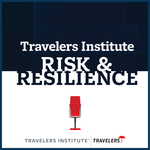
Tune in to “How Technology Innovations Are Improving Distracted Driving Data and Advancing Safety (Part 1),” available on Apple Podcasts® and Spotify, and “How Technology Innovations Are Improving Distracted Driving Data and Advancing Safety (Part 2)” on Apple Podcasts® and Spotify.
Learn more, explore the most recent episodes and subscribe to the Travelers Institute Risk and Resilience podcast.
Summary
What did we learn? Here are the top takeaways from Painting a Clearer Picture: How Technology Innovations Are Improving Distracted Driving Data and Advancing Safety.
Traditional methods of gathering data on distracted driving have limitations, but telematics programs can now provide a more comprehensive view of driver behavior. Historically, crash reports and roadside observations were the primary ways to get information on driving habits. With advancements in technology, telematics can analyze sensor data from smartphones to get further insights to help understand what causes crashes. Ryan McMahon is Senior Vice President of Strategy and Corporate Development at Cambridge Mobile Telematics, the world’s largest telematics provider. The company’s mission is to make the world’s roads and drivers safer. “We do that by making technology that measures risk,” McMahon said. “And then our partners work with that technology to build strategies and incentives to reduce those behaviors.”
Studying driver motivation can help inform strategies to change behavior. Kit Delgado is an attending physician in the emergency room of Penn Presbyterian Medical Center and serves as Associate Professor of Emergency Medicine at Penn’s Perelman School of Medicine. He thinks most of the injuries he sees because of distracted driving are preventable, and this has inspired him to conduct research on how to help nudge people toward safer driving habits. His research team uses behavioral economics to combine insights from psychology to understand why we deviate from rational behavior. “We take those insights and combine them with smartphone telematics to work with insurance companies to help change behavior,” he said. His team’s research has shown the positive effects of incentivizing drivers for safer behavior.
Telematics data can shed light on individual and collective behaviors. Johnathon Ehsani, Associate Professor at the Johns Hopkins Bloomberg School of Public Health, emphasized, “The key is to be more intentional about our actions in the vehicle. Telematics is a tool for feedback to drive behavior change at the individual level and hope that results in safer roads.” Delgado added that people are unaware of how much they’re using their phones while driving because picking up the phone to view a text is often an automatic behavior. He said, “Think about how you can design your life, your system and your driving situation so that you’re less likely to do this.” Delgado stressed that, like starting to exercise, you don’t have to do it all at once. “Creating incremental change and goals is much more effective than saying don’t use your phone at all,” he said. He suggested starting by turning on “Do Not Disturb” while driving.
Feedback from telematics has a myriad of useful applications. McMahon gave several examples of how data can be useful beyond detecting risky driver behavior. Telematics can be used to geotarget areas that may need an infrastructure upgrade. For example, if there’s a lot of hard braking observed in a certain area, a stop sign may need better placement. Telematics can detect the speed of impact of a crash in real time and report that crash immediately, sending emergency help when people need it most. When combined with crash and claim data, telematics data can help create a reconstruction of a crash. McMahon said, “Feedback is the critical thing – you cannot just capture data in the background. You have to provide feedback loops to the individual driver.” He added that the data brings a lot of self-awareness in addition to the other three ways you typically get feedback on your driving: from people in your car, people in other cars and engagement with law enforcement.
Building good habits early could help long-term road safety. Ehsani explained how he thinks telematics in the licensing system could revolutionize how we approach teen driver safety. By implementing telematics, teens could demonstrate their practice hours, ensuring they meet safety requirements before progressing through the licensing system. They could get real-time feedback on their driving. “Habits like speeding excessively and distracted driving form very early in our driving careers, but if you have the ability to train and socialize safe driving from the very beginning, those good habits are likely to stick,” he said.
Education and enforcement both have a part to play in curbing distracted driving. McMahon stressed that education should be part of a continuum that includes enforcement of laws with consequences for distracted driving. Delgado highlighted the need for practical guidance aimed at promoting situational self-control among drivers like utilizing hands-free features and setting up “Do Not Disturb” functions. The panelists agreed that a comprehensive approach, integrating education, enforcement and behavior change strategies, is essential to tackle the issue of distracted driving effectively and promote safer roads for all.
Insurance agents and brokers can have an impact on telematics adoption and road safety. About 10% of the population has opted into telematics, and that number is growing about 30% every year, with every insurance company in the top 10 now offering a telematics program, said McMahon. “The insurance industry is key,” added Ehsani. “Insurance offers an opportunity for premium reductions and, as a result, safer driving behavior.” McMahon added, “Right now the insurance industry provides about $4 billion in incentives to consumers that are engaged in telematics programs. And we’re still just scratching the surface. The numbers are going to be a lot bigger in the next five years.” Delgado stressed, “The vast majority of people who participate in these programs have a policy that is no more expensive and oftentimes they do get a discount.” McMahon advised agents, “Offer your consumers insurance-based telematics. It could save them money and it will save lives in your community.”
Comprehensive research supports using telematics to make roads safer, and there are many online resources to help drivers address distracted driving. All three speakers pointed to research that illustrates the benefits of telematics and resources to help drivers reduce their distractions while driving, including The Insurance Institute for Highway Safety, The Nudge Unit at Penn Medicine and Cambridge Mobile Telematics. For tips on talking about distracted driving, the Travelers Institute’s Every Second Matters initiative empowers drivers, passengers, cyclists and pedestrians to speak up, set positive examples and play an active role in changing roadway behaviors to help prevent injuries and save lives. In conclusion, Ehsani said, “We have to remember that the moment we get behind the wheel, it is not only ourselves who are affected. The idea that we’re in a collective, community space when we’re driving is a core principle.”
Panelists

Johnathon P. Ehsani, Ph.D., M.P.H.
Associate Professor, Johns Hopkins Bloomberg School of Public Health

Kit Delgado, M.D., M.S.
Associate Professor of Emergency Medicine, Perelman School of Medicine, and Attending Physician, Penn Presbyterian Medical Center
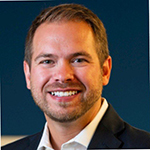
Ryan McMahon
Senior Vice President of Strategy and Corporate Development, Cambridge Mobile Telematics
Presented by
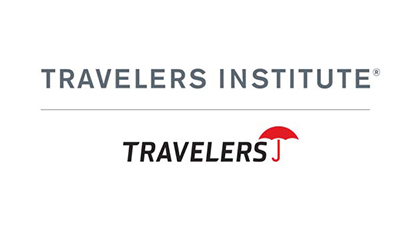
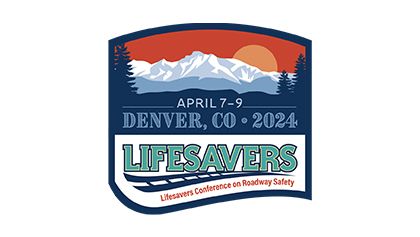
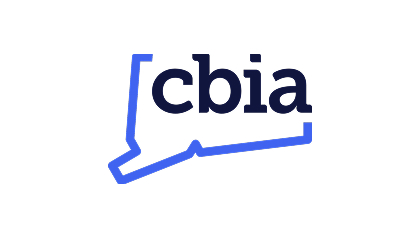

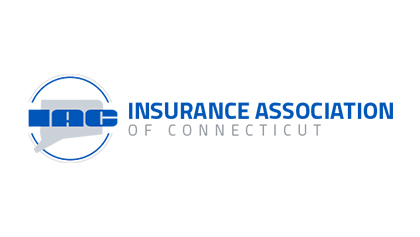
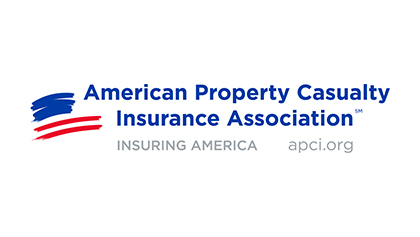
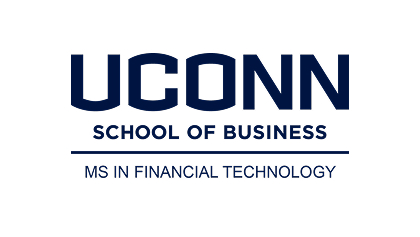

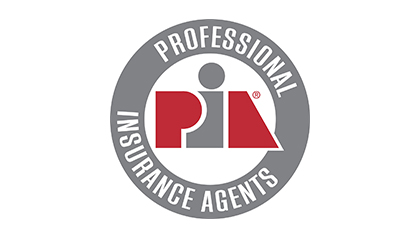
Related content
ADAS in the Wild
Newer vehicles today are packed with sensors and technology. Learn more about Advanced Driver Assistance Systems (or ADAS) that aim to help drivers better react to danger on the road and partially automate the driving task.
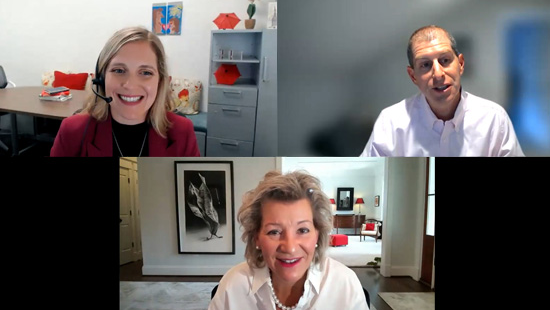
Crash and Learn LIVE Edition with IIHS
Watch this webinar to see a heart-pounding crash test as it happened, with commentary and real-time reactions from leading safety experts at the Insurance Institute for Highway Safety.
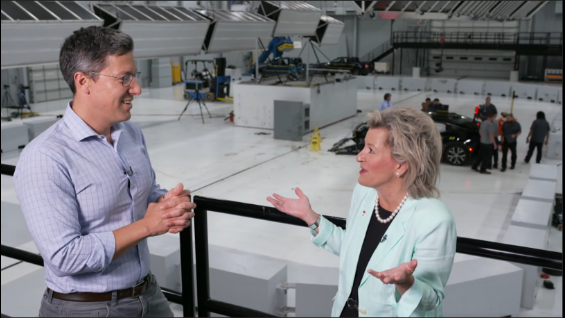
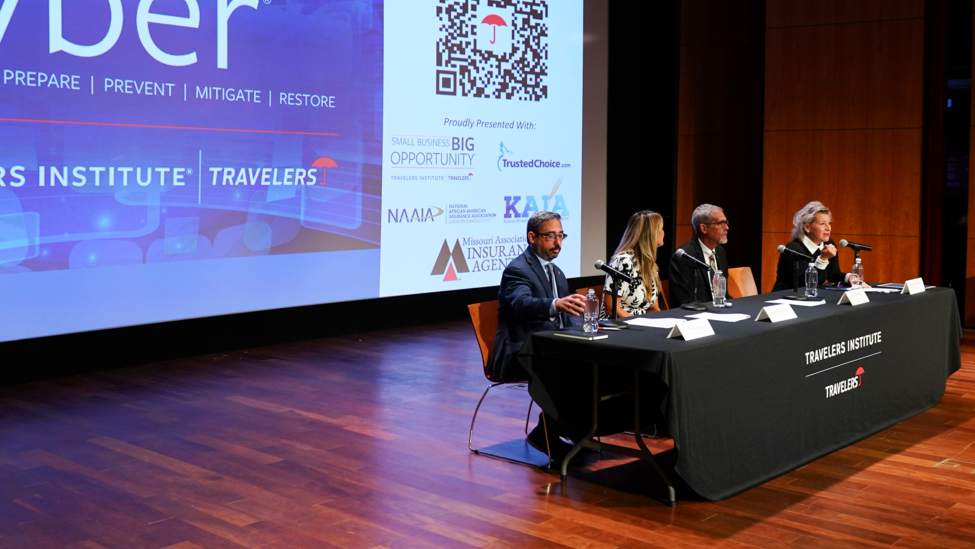
Events & webinars
Don't miss other upcoming programs in the Wednesdays with Woodward® series.

Join our email list
Get on the list to receive program invitations, replays and more.
